Pick-up arms with integral head.
Also, volume controls.
Pages in progress; dates etc. are still being researched.
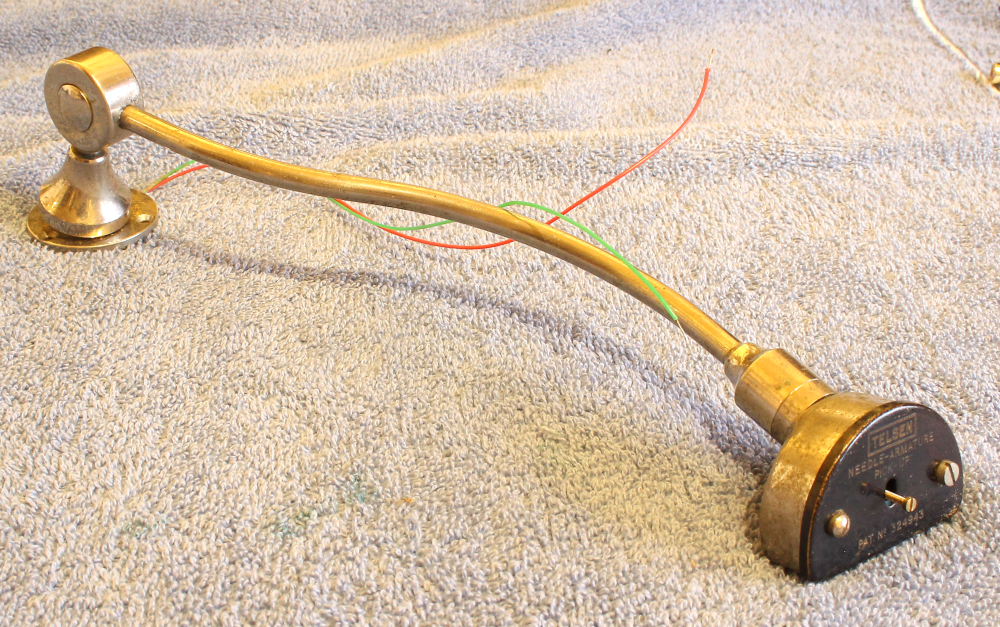
BURDEPT / TELSEN. This very advanced ‘needle armature’ pick-up appeared ca. 1930, and was adopted by the BBC. See and hear it in action at http://youtu.be/krYebUesnF4 . (The 10BA brass needle screw is a ‘codge’.) 😕

ANONYMOUS. This arm seems to be cast aluminium or a very light alloy.

Unfortunately, the bearing is broken. The Base has three screw terminals – two for the signal, the third for the earth.
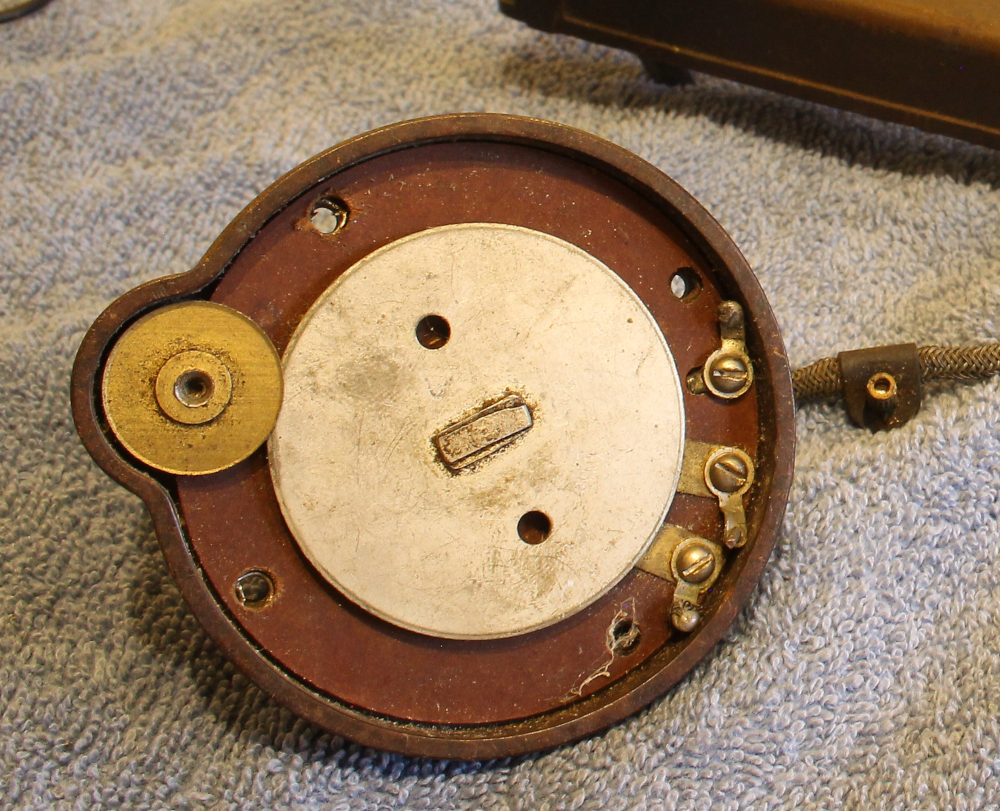
The volume control wheel is double-flanged & engages with the large central disc.
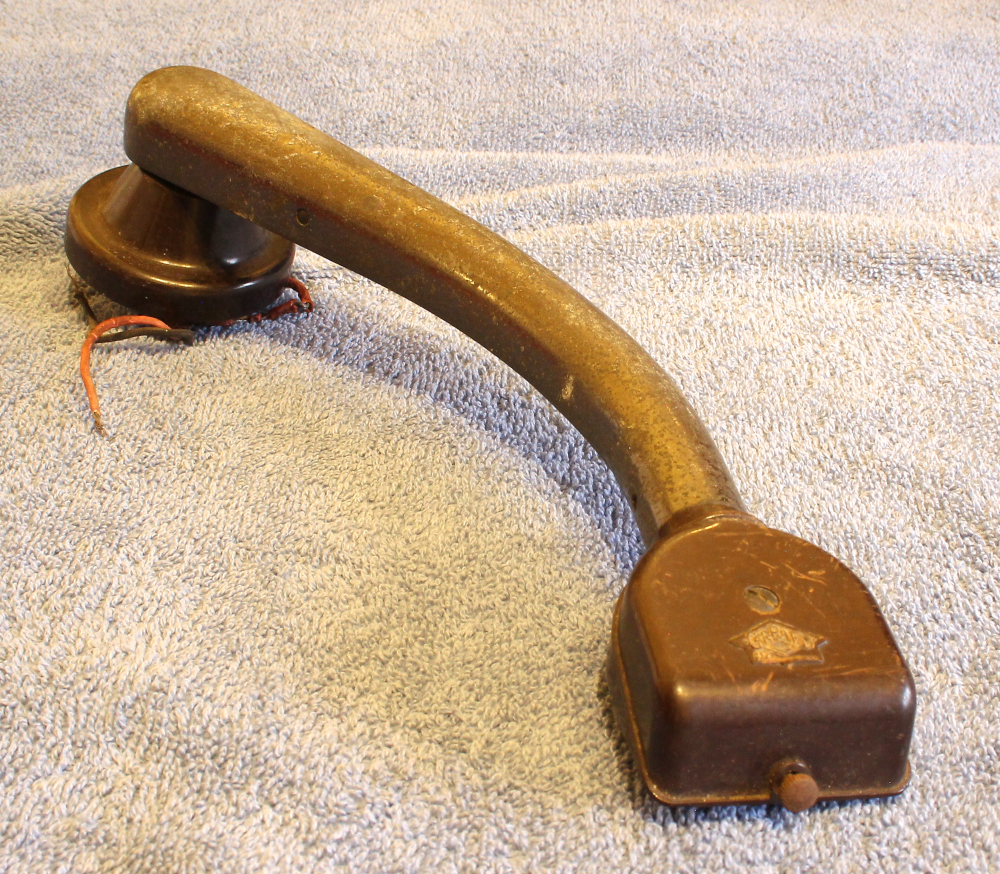
GARRARD. Late 1920s/early 1930s. This will be quite early in the Garrard electrical era. The head turns through 180° anti-clockwise to facilitate chamging the needle. The head is bakelite, but the arm is a metal casting. Its relatively short length probably implies it was made just for a 10″ turntable; but see next arm below.

GARRARD. Though anonymous, this is very similar to the last arm. However, the actuators below the arm pivot proclaim it to have been ‘rescued’ from an auto-change mechanism. Also, it is longer than the arm in the last image, so is intended for use wth a 12″ turntable. It is anonymous, probably because the concept of a gramophone employing openly-named components from different companies, was at this time period unacceptable to the main manufacturer of the machine? In fact, such combinations had existed from the very dawn of talking machines. By the 1950s, a maker of a cheap record player would be boasting that it had a Garrard deck, rather than a B.S.R! In the background is a forlorn, headless arm, but is unmistakably also a Garrard.
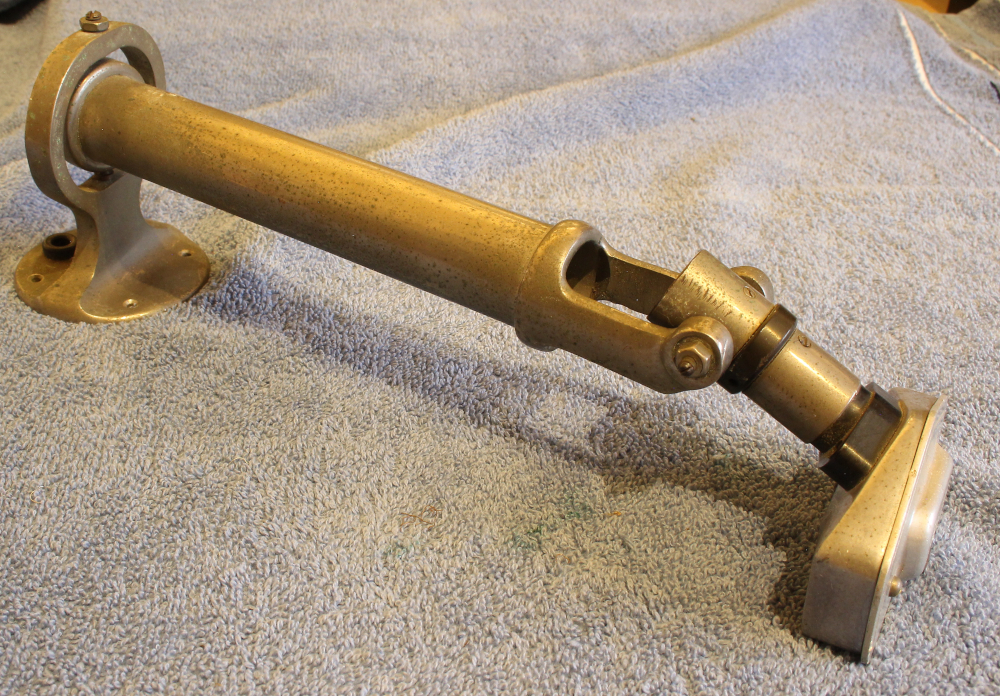
S.G. Brown. Electric pick-ups were right up the street of the S.G.Brown – they had been around for years making relays and other wire-wound electrical precision bits & pieces. Along with Garrard, they made Gyro-compasses for aeroplanes during the Great War (1914 – 1918) – it was discovered with dismay that the few aeroplanes we had in 1914 were equipped with German-made Gyro-compasses, and nobody was making them in the U.K. Emergency!! 😮
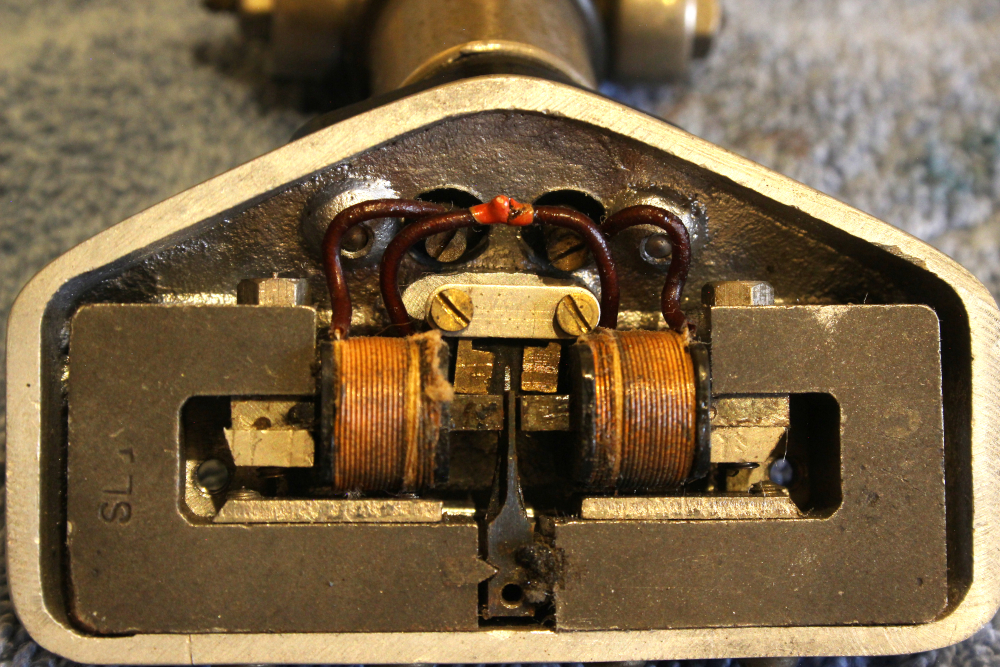
‘The Works’ of the S.G. Brown. They had been making add-on pickups since 1927. This 1930 arm was well
reviewed in the ‘Wireless World’ magazine. It has the unusual (unique?) combination of a knife-edge metal support on the left side of the armature, while on the right, a flexible rubber suspension. It deserves a video!
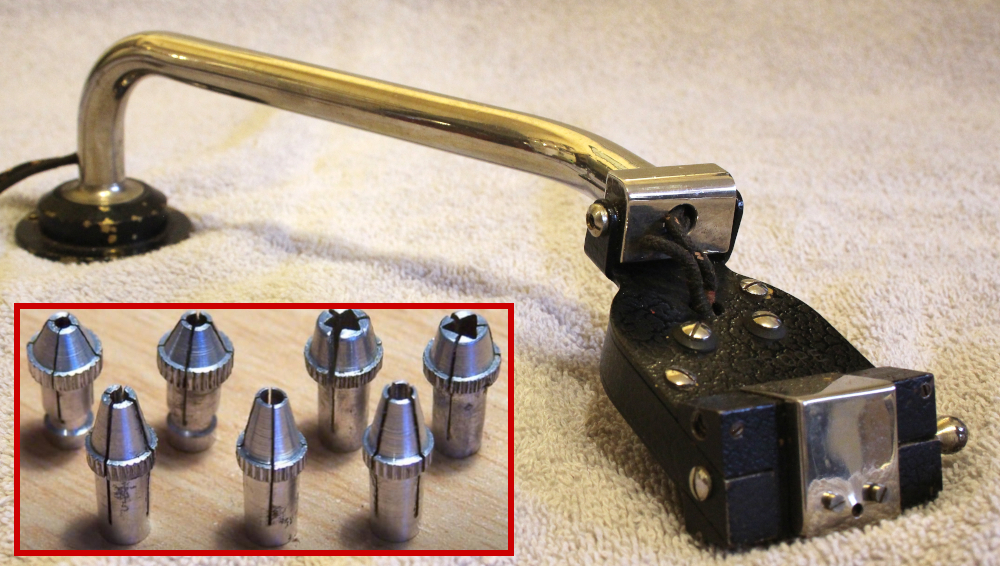 THE MELTROPE. This is a ‘Prince’ of early pick-ups! It was designed by the famous Percy Wilson, to supersede the Meltrope mechanical soundbox, which was very highly regarded, (and still is). Wilson used all his subtle magic in this design. Even though it looks as though there should be a needle screw, he would have none of such an intrusive thing; a set of seven aluminium collets came with the arm, enabling ‘needles’ of all types to be used. There is a video of this excellent but rather scarce arm at: https://youtu.be/8orbc7FV3dE .
THE MELTROPE. This is a ‘Prince’ of early pick-ups! It was designed by the famous Percy Wilson, to supersede the Meltrope mechanical soundbox, which was very highly regarded, (and still is). Wilson used all his subtle magic in this design. Even though it looks as though there should be a needle screw, he would have none of such an intrusive thing; a set of seven aluminium collets came with the arm, enabling ‘needles’ of all types to be used. There is a video of this excellent but rather scarce arm at: https://youtu.be/8orbc7FV3dE .
–
B.T.H. (British Thompson Houston). From the very early 1930s, the BTH arm & head combination was justly popular. The armature was commendably small, reducing both resonances and undue record wear. The arm length was adjustable, to suit 10″ or 12″ turntables. It was also available as an ‘add-on’ fitting for a spring-driven gramophone. One criticism is that the head does not turn on the arm, and the arm cannot be lifted very high – needle changing is rather fiddly. Otherwise it’s very good! It certainly deserves a video, which we will try to make a.s.a.p. 😊
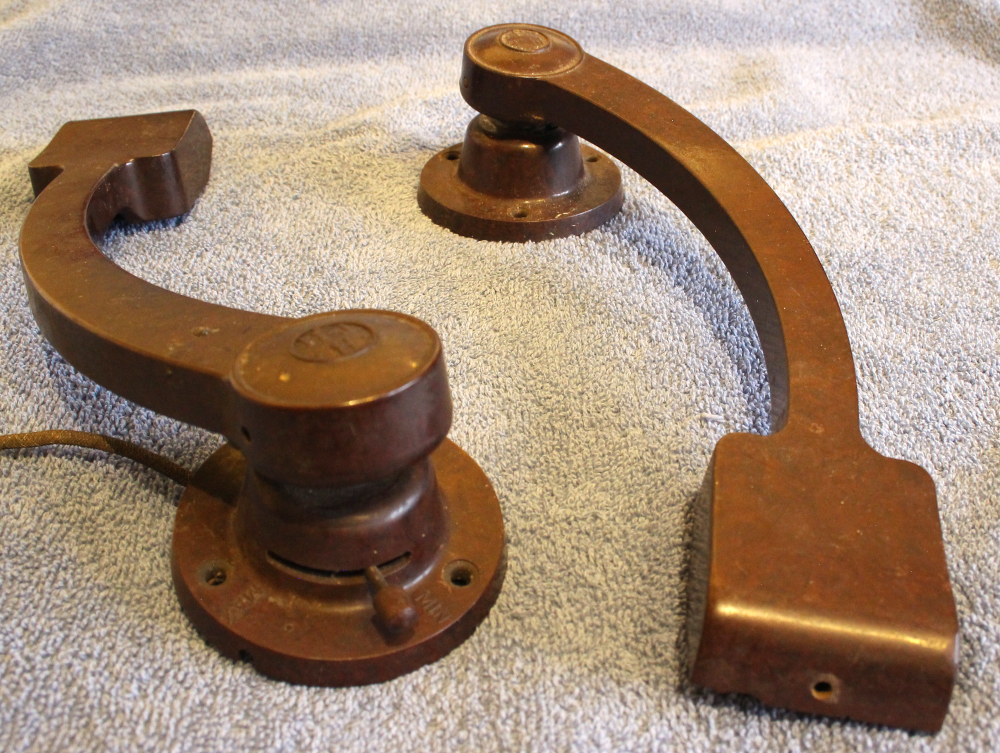
B.T.H. – BRITISH THOMPSON HOUSTON. Known as the ‘Minor’, it was launched at the Olympia Radio Show in September 1931. It cost 27/6d. In bakelite, it proved popular, A volume control was built into the base. A lever depresses a sprung metal disc against a resistance track. It sounds primitive, but most of these still work. It was in production for a very long time indeed, though the model was soon revised – see below. The re-design had a rather smaller head, with the arm in gay mottled bakelite, still retaining the volume lever. In both cases, the arm can be raised fairly high, making needle chaging much easier.
The re-design had a rather smaller head, with the arm in gay mottled bakelite, still retaining the volume lever. In both cases, the arm can be raised fairly high, making needle chaging much easier.

Perhaps surprisingly, this arm was still available in 1950, as in the Gramophone Magazine Ad. above.
(Issue of October ’50.) And still at the same price!
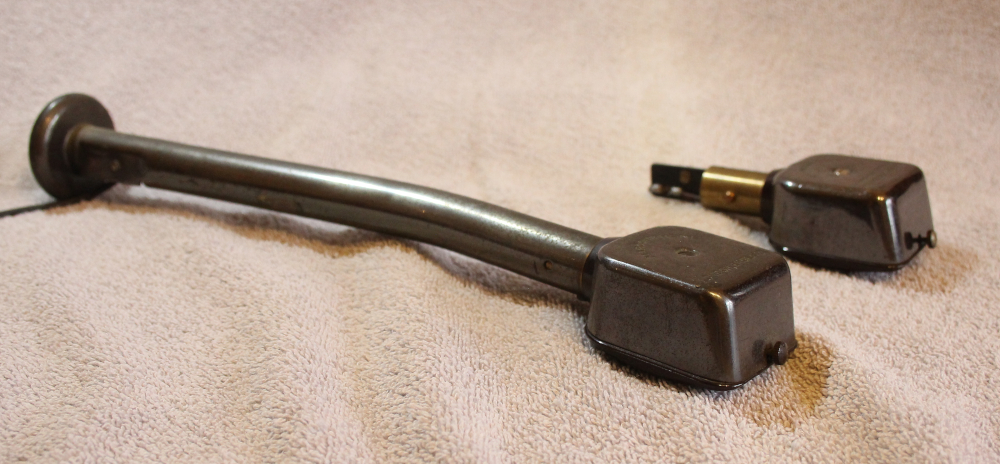
HMV No.15, ca. 1930 – long arm for 12″ turntable; pivot missing. The head rotated 180° for needle changing. The detached head shows the brass sleeve, and one of the spring-loaded balls that latched it square. A vertical slot on the other side of the sleeve ensured that the head couls only be tuned back in the opposite direction. (But see the Edison Bell Type 3 below!)
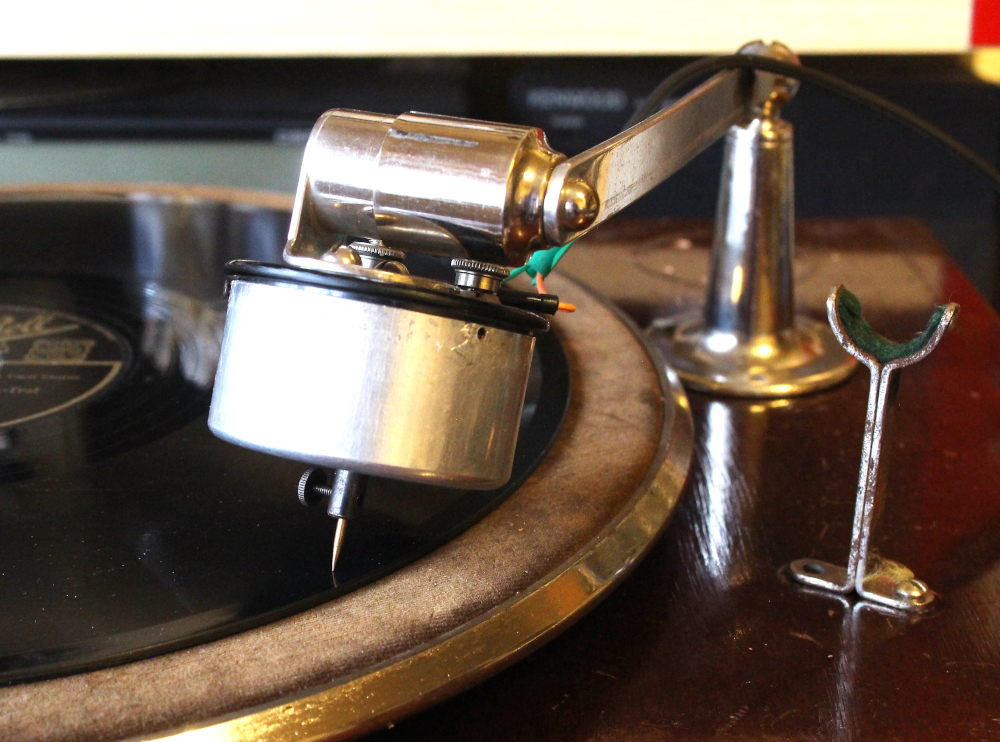
EDISON BELL (TYPE 1). See ‘Wireless World’, October 1927. There seem only to be three types of Edison Bell pick-up, so they are dealt with together. This pickup was non-functional when we acquired it, but a coil was wound for it, and you can see a video of the repair & hear it performing at: http://youtu.be/89GQFQ23qbw
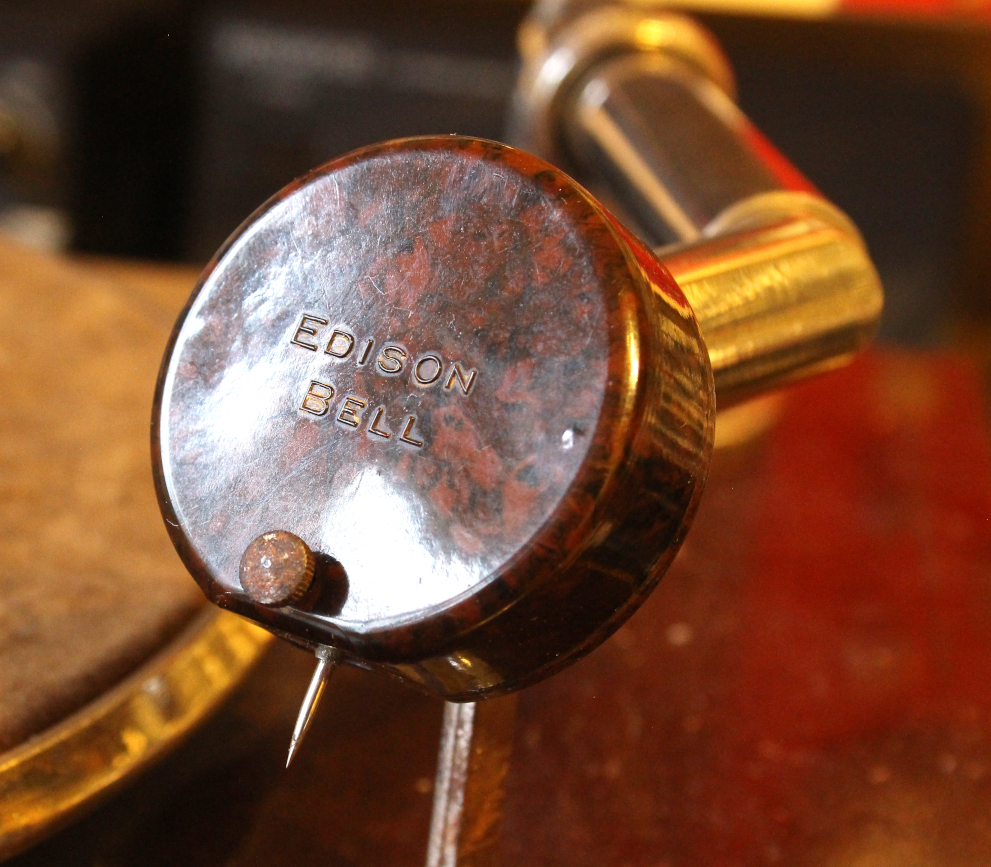
EDISON BELL (TYPE 2). This came with an arm; it is not certain whether it was available for attachement to a gramophone tone arm. The arm was virtually the same as that of the Type 3 – see below.
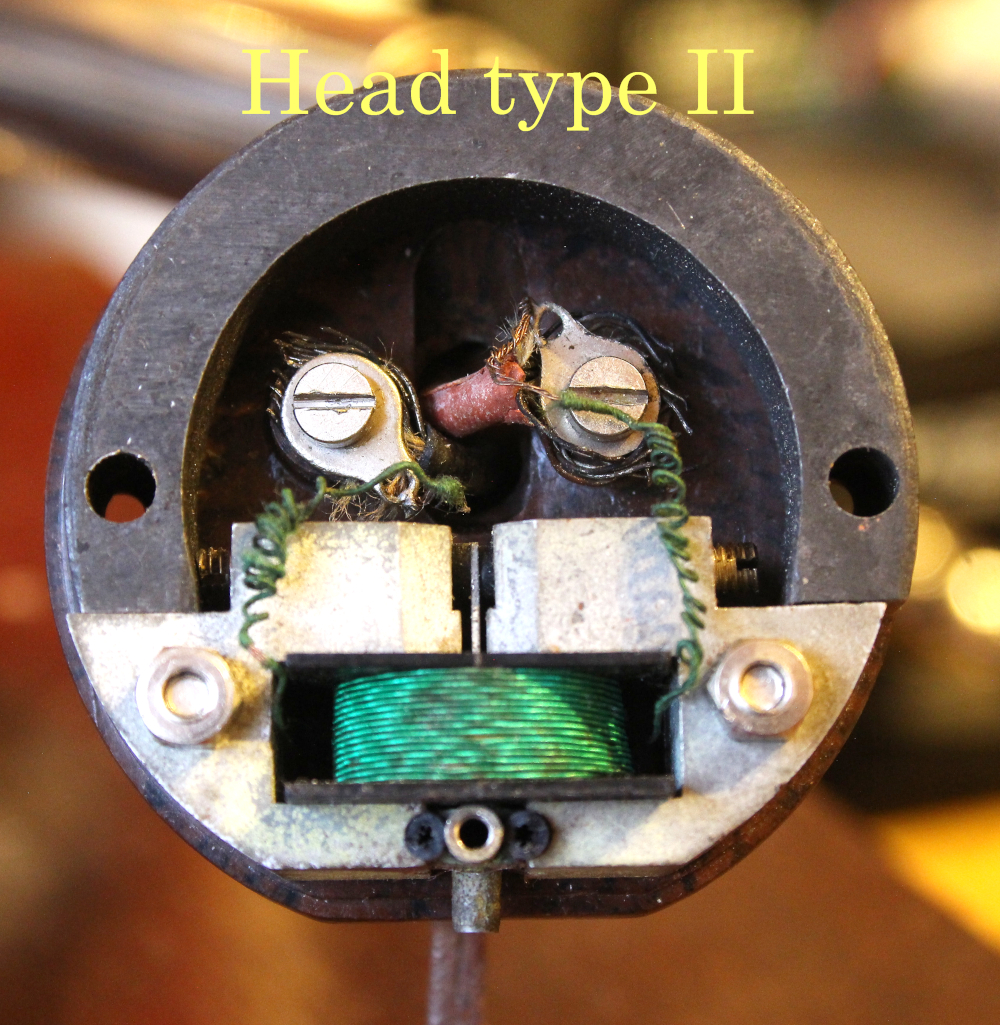
EDISON BELL (TYPE 2). Circa 1930. Interior view. The top of the armature is seen above the coil. It is damped by short pieces of rubber, which pass through the pole pieces & are compressed to the required degree by brass (non-magnetic) grub screws. The slot on the right-hand one is clearly visible. The green wire of the coil is only an outer protective layer; the real winding is inside and very much finer. The DC resistance of the coil is just over 1000 Ohms; 40 SWG copper wire has a resistance of 1.48 Ohms per metre, so we would need to wind 1000 / 1.48 = 675 metres of it onto a small round coil former to get up to ~1000 Ohms. It’s only 0.122 mm thick so it breaks very easily, believe me! 😗
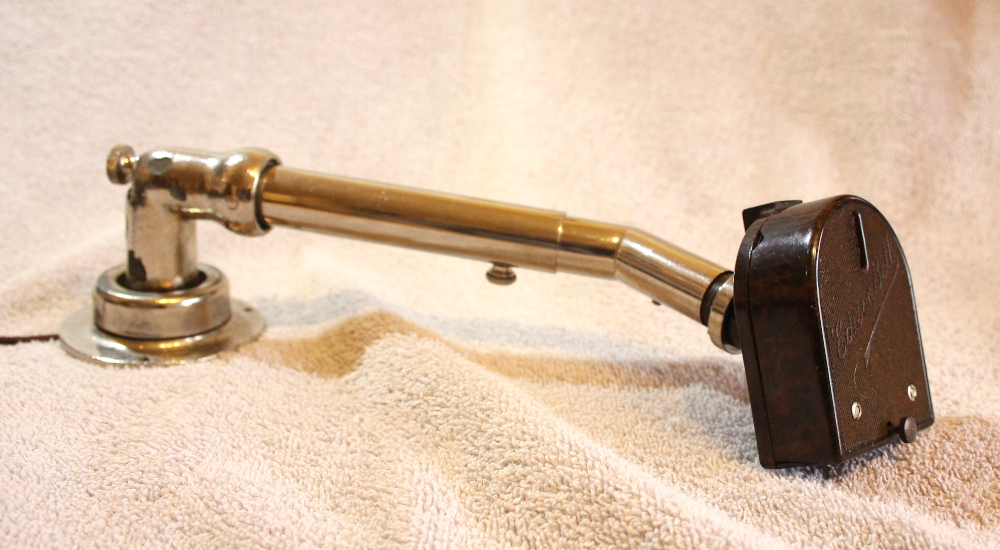
EDISON BELL (TYPE 3). This uses a virtually identical arm to that provided for the Type 2. It is extensible to cater for a 10″ or 12″ turntable. There is a rear screw to adjust playing weight. The head turns through180° for needle changing. The groove behind the head is purely to ensure the vertical alignment of the needle.
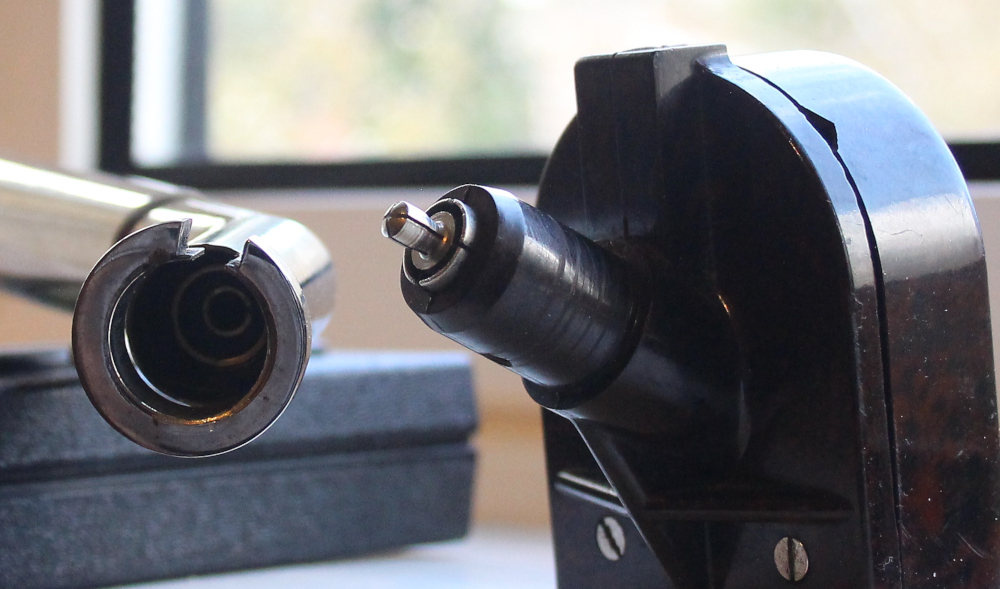
In fact, you could have turned the head round and round many times without any ill effect, because of a breathtaking piece of innovative design. The head has a coaxial plug which fits into a coaxial socket in the end of the arm. This is a superb refinement. Alas, Edison Bell folded in 1933, certainly as far as their radio & electrical side was concerned.

EDISON BELL (TYPE 3). This type abandoned the use of grub screws and rubbers to provide damping to the top of the armature. Instead, a relatively thick sleeve of rubber was fitted around the top of the armature, filling the circular space in the centre of the coil. The red tubular armature suspension is my replacement. It is silicone plastic insulation from high-current electrical applications, such as model aeroplanes & racing cars. Such tubing can resist 200°C, but it is the elastic properties of silcone plastic which render is so useful for restoring old electric pick-ups!
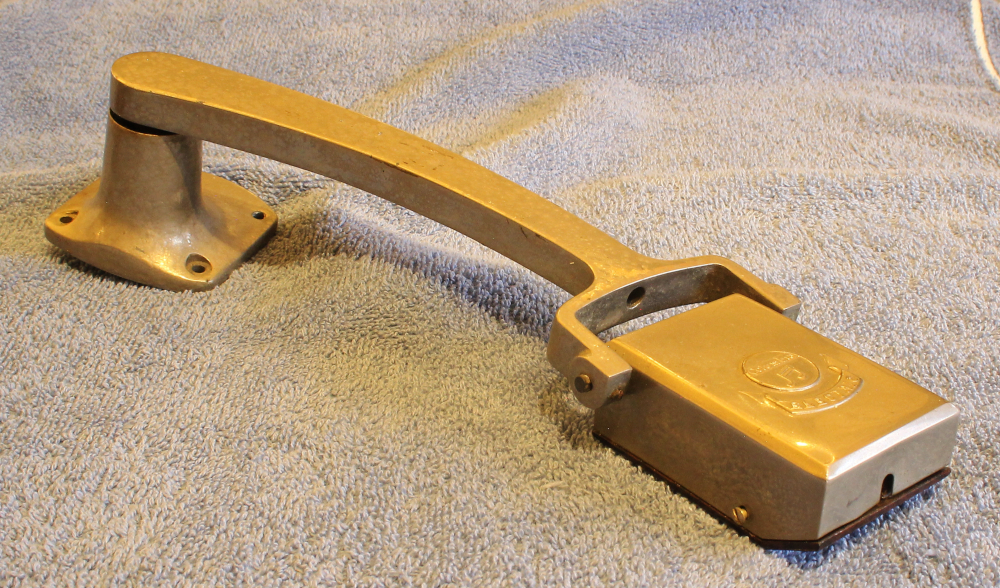
E.M.I. / COLUMBIA. Date uncertain, but early-mid 1930s. It is not yet known whether there is an H.M.V. arm in this metal finish, or what unit (radiogram?) it was fitted to.
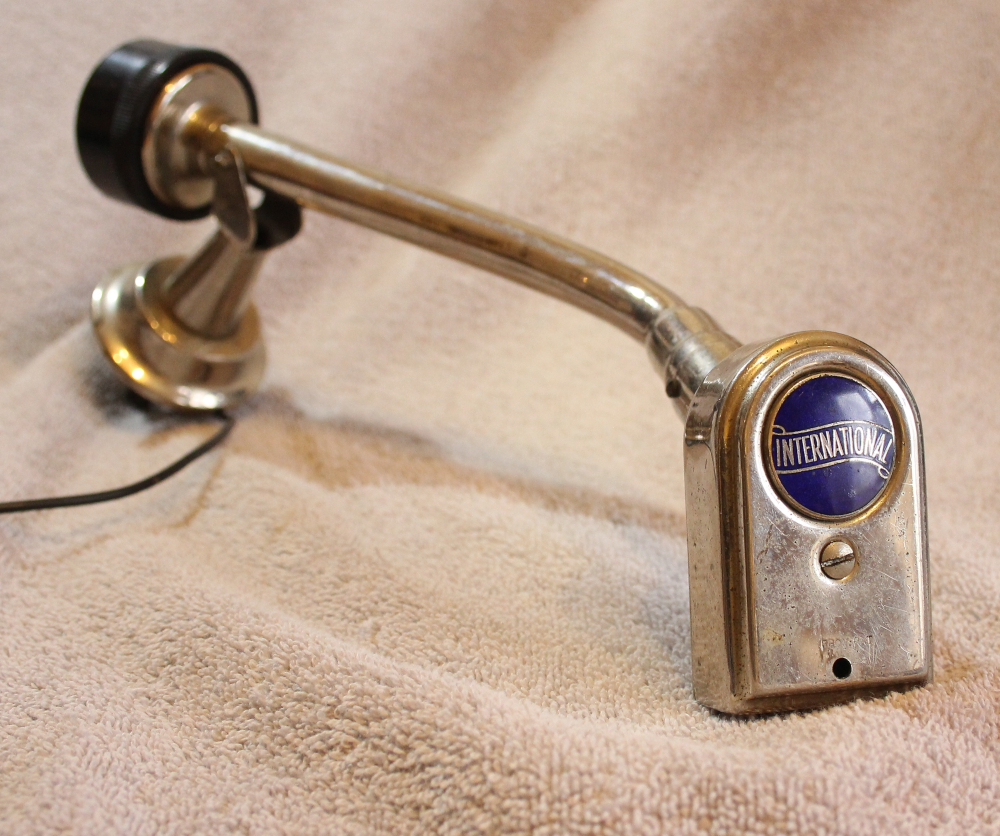
This so far untraced arm looks like early-ish 1930s, and possibly of European origin?
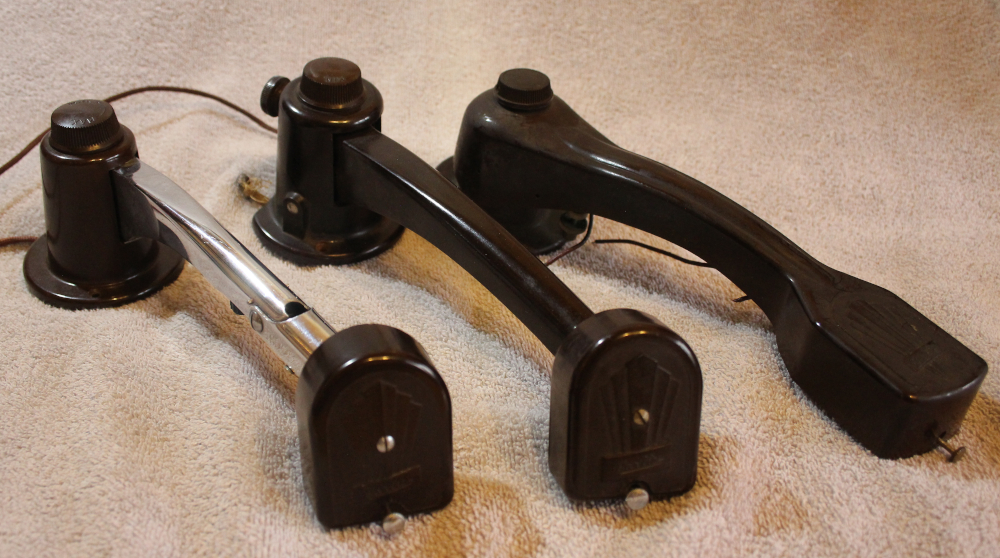
Three ‘Harlie’ pick-ups. All have volume controls on their pivots. The combination of Bakelite & chrome plated metal on the left-hand example is very smart. It also has the feature of pivoting upwards nea the fron of the arm. this both reduces the playing weight, & also makes it easier to change the needle. An ‘add-on’ for a mechanical gramophone was also offered and may be seen on page 2 of this article. (It may be that the Harlie design was licenced from a U.S. company – more research needed.)

Marconiphone – probably 1930-31, before the formation of E.M.I., which, besides the HMV and Columbia record companies, also took in the domestic radio side of the Marconi Company. Later Marconi arms were identical with those marketed under the HMV & Columbia names.
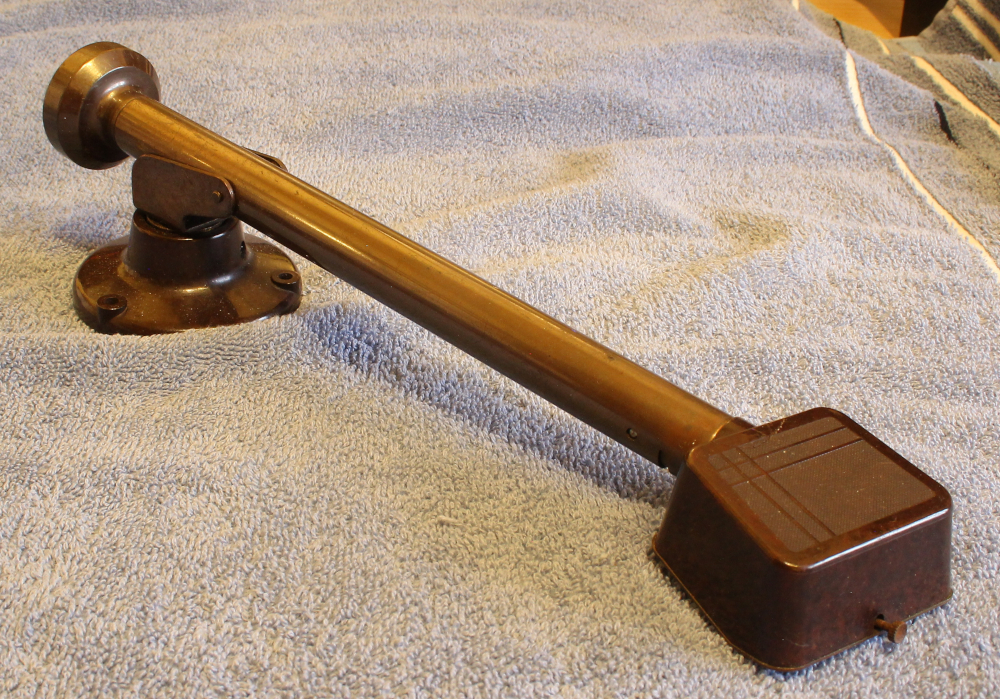
BOWYER-LOWE. Well reviewed in the ‘Wireless World’ early 1930s.
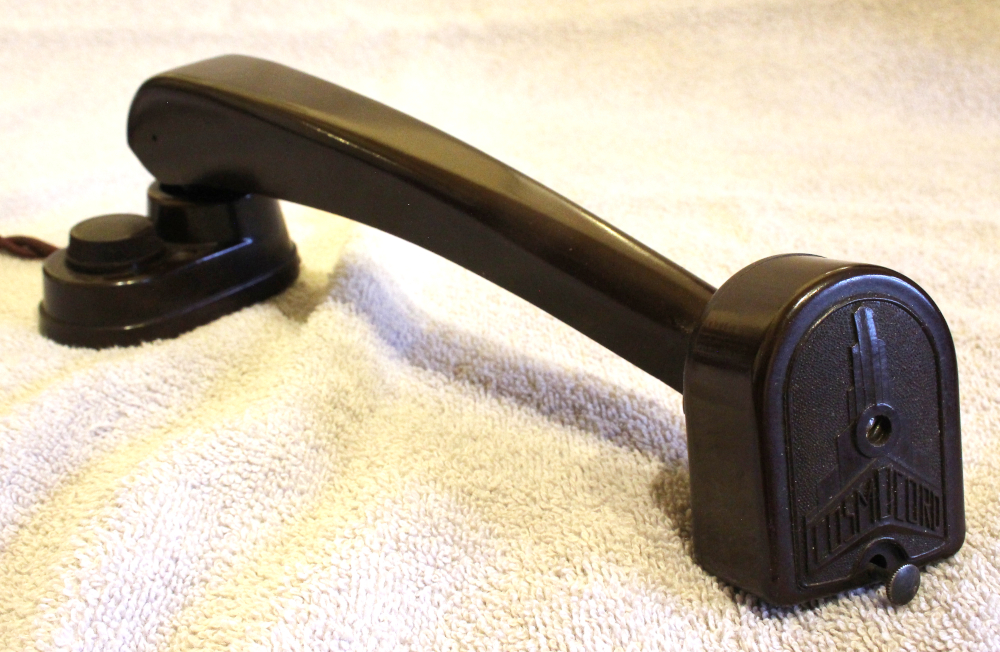
COSMOCORD (= ACOS). Surviving well into at least the1970s, Enfield-based Cosmocord also made crystal pick-ups, crystal microphones, headphones (including military spec.) and of course moving magnet cartidges for vinyl discs.

DAPTACON. The separate head turnedup… separately 🙂, and it was several years before we discovered a complete example. Provisonally, we date in to the early 1930s.
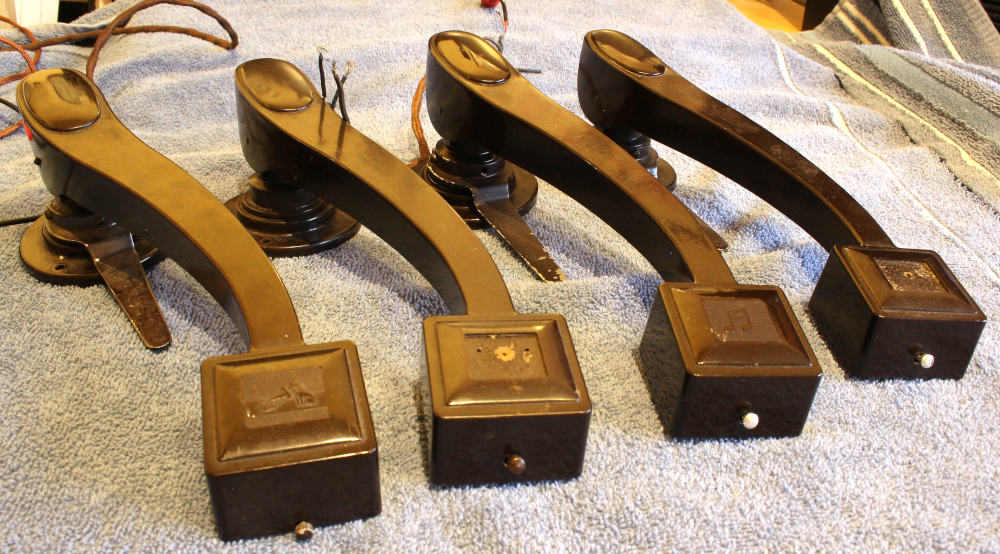
E.M.I. (H.M.V. / Columbia). This is one of the most common 1930s pickups. To boost rcord sales, E.M.I. made ‘add-on’ record decks to plug ito your wireless, and sold them virtually at cost. It was very philanthropic of them, because there was no obligation to also buy Columbia or HMV records! An HMV is on the left, and a Columbia third from left. The other two probably had pressed metal trade makrk inserts, which have been prised out as souvenirs.
 E.M.I. / MARCONIPHONE. Marconi’s domestic wireless and gramophone division had become part of E.M.I. So the ‘standard’ arm was also supplied in the guise of Marconiphone. On the left of the front flap is the frequency reponse curve.
E.M.I. / MARCONIPHONE. Marconi’s domestic wireless and gramophone division had become part of E.M.I. So the ‘standard’ arm was also supplied in the guise of Marconiphone. On the left of the front flap is the frequency reponse curve.

GOLDRING. An early Goldring arm. Goldring was a German company who had been making gramophones since 1906. They translocated to the U.K. in 1933, moving from strength to strength, and still flourish today.
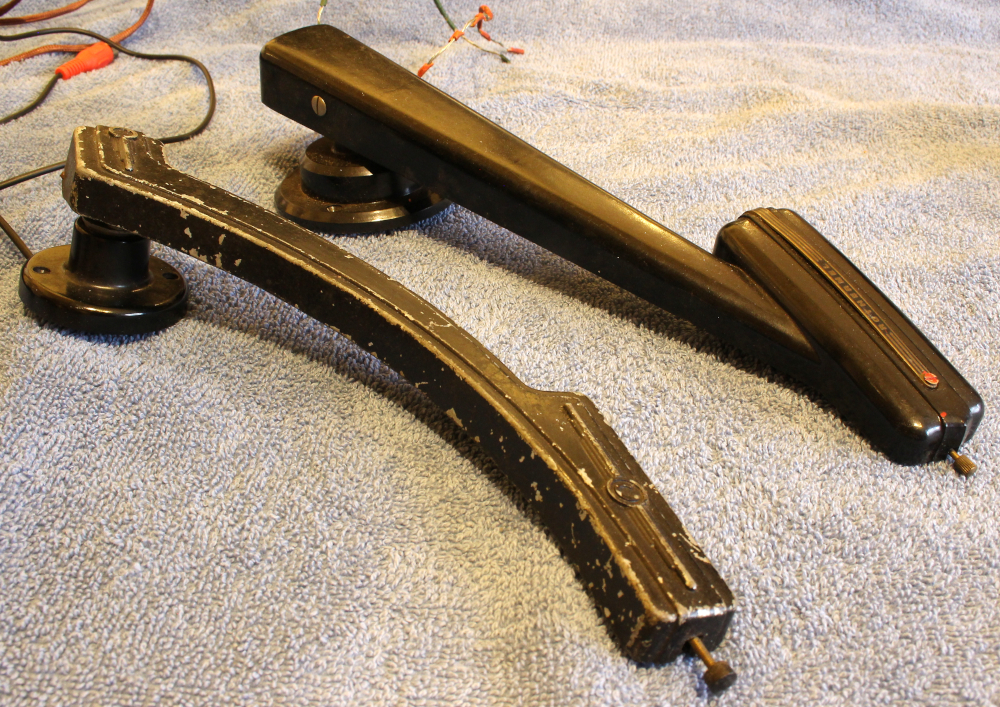
COSMOCORD (L) and ROTHERMEL. Crystal (Pieze-electric) pick-ups appeared inthe later 1930s. Using Rochelle Salt, they were alas sensitive to temperature – if it rose too high, the crystal would be de-activated. The Cosmocord arm is a heavy metal casting, while the Rothermel is very American-looking bakelite – though it says Made in England.
1940s.
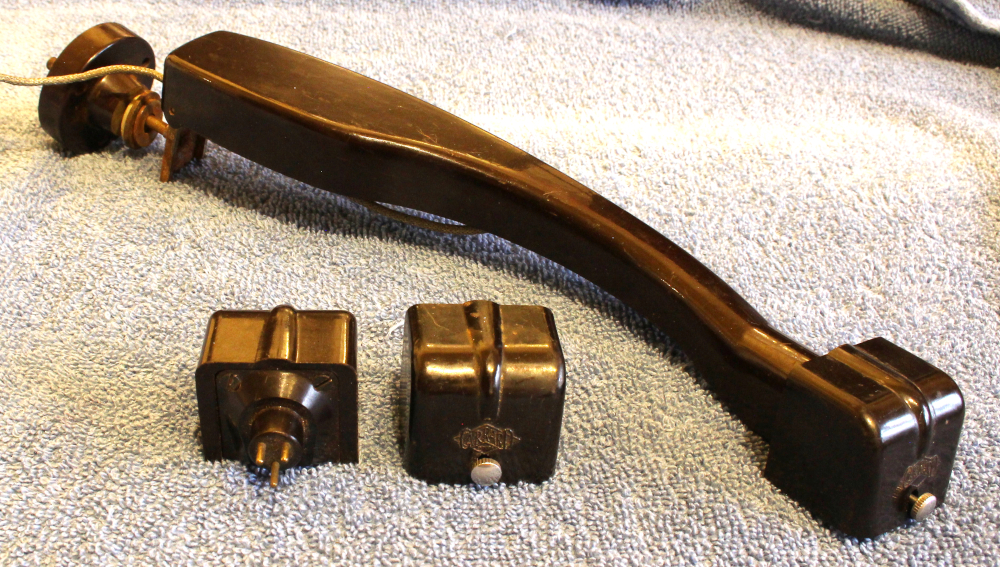
GARRARD, DECCA. Three-pin plug-in heads are a feature of this set-up. The two top pins are for the signal, the lower pin for the ground (shield) connection. More research is needed here; we’re quite coming out of our usual 1920s -1930s time range! The interchangeable head is mostly associated with microgroove vinyl – i.e. 1949 onwards. But here are such heads which are resolutely for 78s, and therefore strictly 1940s/1950s. Enthusiast Peter Sol saw this page, and kindly reported that the three-pin plug-in format was very possibly an early example of rival companies adopting a standard format, in which they could compete on ‘a level playing field’. The primary compmanies who adopted this 3-pin format seem to have been Decca and Garrard, however, one (or both) of those companies made only the heads, and bought in the arms from BSR (Birmingham Sound Reproducers) of Old Hill, Staffordshire. BSR was a long-lived company of immense, indeed international importance, as were Garrard, Collaro and Goldring. Detailed histories of those companies are far beyond the modest scope of this website. But please do look them up on the broad Internet!
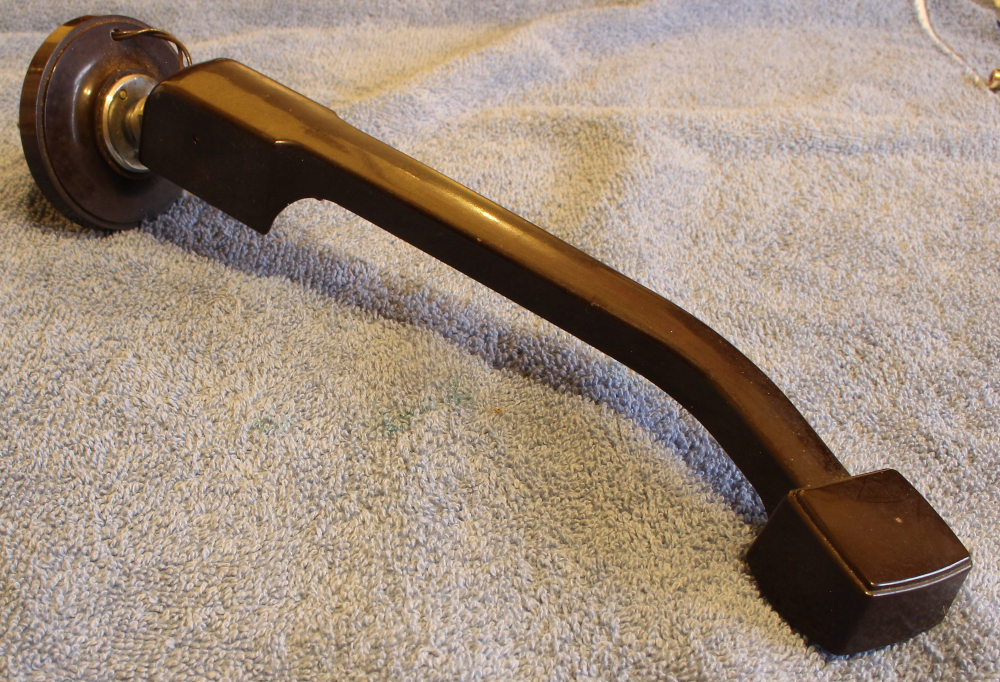
ANONYMOUS. Rather suprisingly, this neat arm bears no ID at all. It uses the miniature needle, e.g. the Columbia ’99’. These are held in place by the magnet in the head.
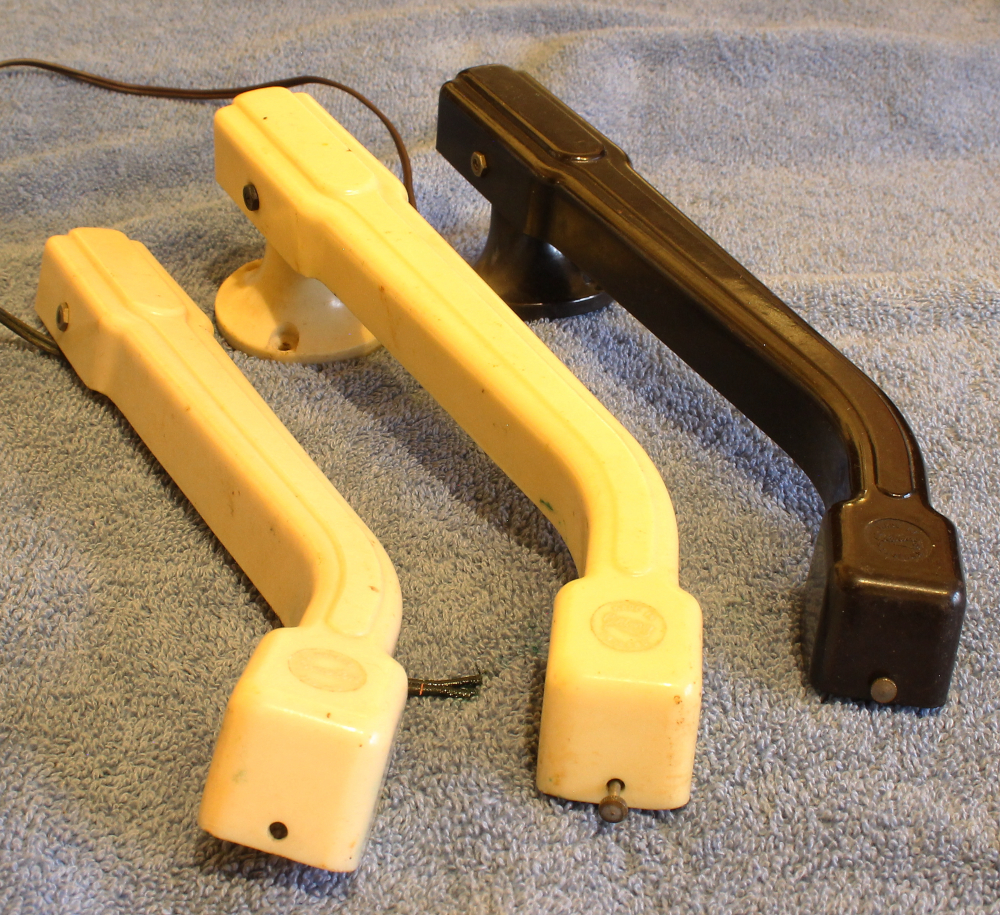
GOLDRING. Possibly late 1930s? Standard needle. These are all from the same mould,but the one
on the left is badged ‘Emston’.
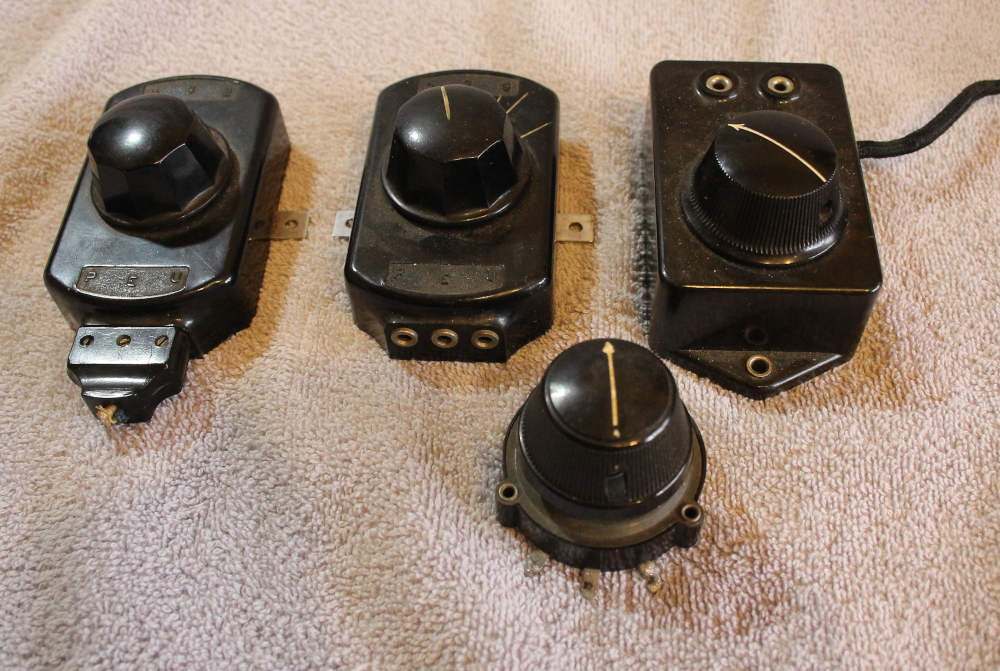
Lastly, volume controls. Firstly, they were necessary because there was great variation in the electrical output of pick-ups. Some of them could deliver one Volt or more, an enormous amount compared with modern disc pickup catridges! So very often in the early days, a pickup had a built-in volume control – as can be seen on many of the arms illustrated above. Some earlier add-on pick-ups had ‘in-line’ volume controls, such as those shown above. The pick-up plugged into the volume control, and there was a lead from the volume control to your radio set. There were many jests about just how many wires were needed for the installation of a ‘Wire-less’ set. 😄😄 Another method of getting the pick-up connected to your wireless set was a ‘valve adaptor’. I have one somewhere but can’t find it. But when I do, it certainly merits a video!